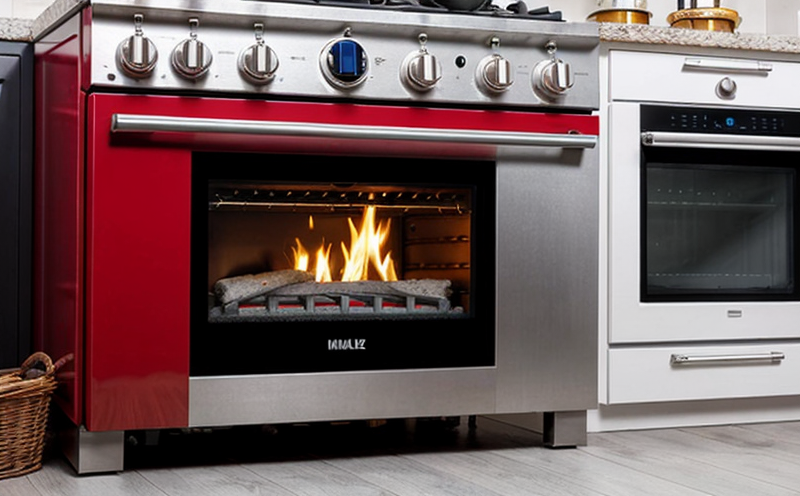Documentation and Reporting of Fire Test Results
The importance of accurate documentation and clear reporting in fire safety testing cannot be overstated. This process is critical to ensuring that household appliances meet stringent safety standards, thereby protecting consumers from potential hazards. Proper documentation serves as a vital link between the testing laboratory and the stakeholders involved—quality managers, compliance officers, R&D engineers, and procurement teams. It allows for transparency, traceability, and accountability throughout the product lifecycle.
Fire testing involves rigorous procedures aimed at assessing how household appliances behave under fire exposure conditions. These tests are conducted to determine whether products comply with international standards such as IEC 60335-2-84 (Safety of Household Appliances—Part 2-84: Fire Tests). The results from these tests are essential for regulatory compliance and consumer safety.
When conducting fire tests, it is crucial to follow established protocols meticulously. Specimens must be prepared according to specific guidelines; this may include conditioning the product in a controlled environment prior to testing. Instrumentation plays a key role here, with advanced thermal imaging cameras being used to capture temperature changes during and after exposure.
Once testing concludes, detailed records need to be kept for each specimen tested. This includes raw data collected throughout the experiment as well as any observations made by technicians. The documentation should also specify whether or not the appliance passed or failed based on predefined criteria outlined in the relevant standard (e.g., IEC 60335-2-84).
Reporting these results accurately is equally important. Reports generated from fire tests provide valuable insights into a product’s performance during simulated fires, which can help manufacturers improve their designs and ensure they remain compliant with applicable regulations.
It's worth noting that improper documentation or reporting could lead to incorrect interpretations of test outcomes, potentially causing harm if faulty products enter the market. Therefore, adhering strictly to best practices in both recording and communicating findings ensures reliability and trustworthiness within the industry.
Applied Standards
| Standard Code | Description |
|---|---|
| IEC 60335-2-84 | Safety of Household Appliances—Part 2-84: Fire Tests |
| EN 60335-2-84 | Safety of household appliances—Part 2-84: Fire tests |
Competitive Advantage and Market Impact
In today’s competitive market, providing accurate documentation and reliable reporting on fire test results can give manufacturers a significant edge over their competitors. By demonstrating robust compliance with international standards like IEC 60335-2-84, companies not only enhance their reputation but also foster greater confidence among consumers.
Compliance with these stringent requirements signals to potential buyers that the products they purchase are safe and dependable, reducing risks associated with non-compliant items. This can translate into increased sales and brand loyalty for manufacturers who prioritize quality assurance processes.
Beyond mere compliance, thorough documentation and reporting enable continuous improvement in product design and manufacturing techniques. Regular audits of test records allow firms to identify areas where further enhancements are needed, fostering innovation across the industry.
Moreover, having reliable documentation helps establish credible relationships with regulatory bodies, insurance providers, and other key stakeholders involved in ensuring public safety. Such partnerships can open doors to new markets and opportunities for collaboration that might otherwise be unavailable.
Use Cases and Application Examples
- Consumer Electronics: Fire tests ensure that devices like hairdryers, irons, and space heaters do not pose a risk of ignition when used improperly.
- Kitchen Appliances: Testing ranges from toasters to stoves guarantees they won't catch fire under normal operating conditions.
- Cleaning Products: Evaluating containers and dispensers ensures that flammable substances are safely contained even if accidentally exposed to open flames.
| Application Example | Description |
|---|---|
| IEC 60335-2-84 Compliance | Testing confirms that a specified household appliance meets the necessary fire safety requirements. |
| EN 60335-2-84 Compliance | Ensures compliance with European standards for household appliances. |





